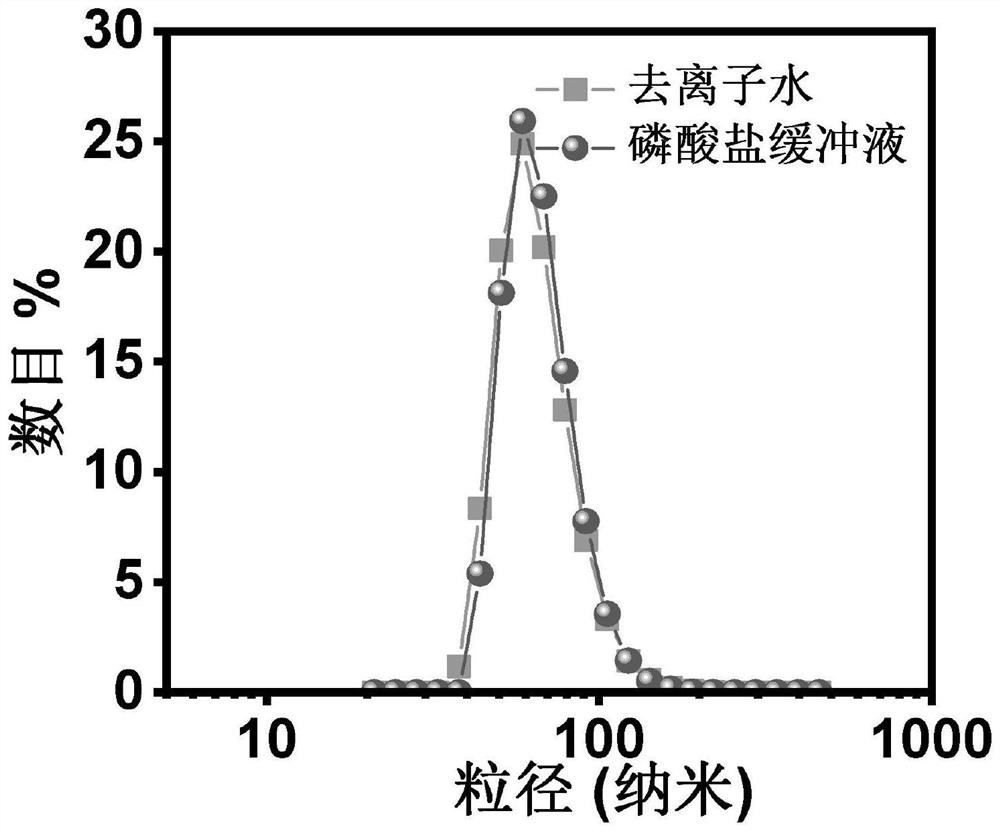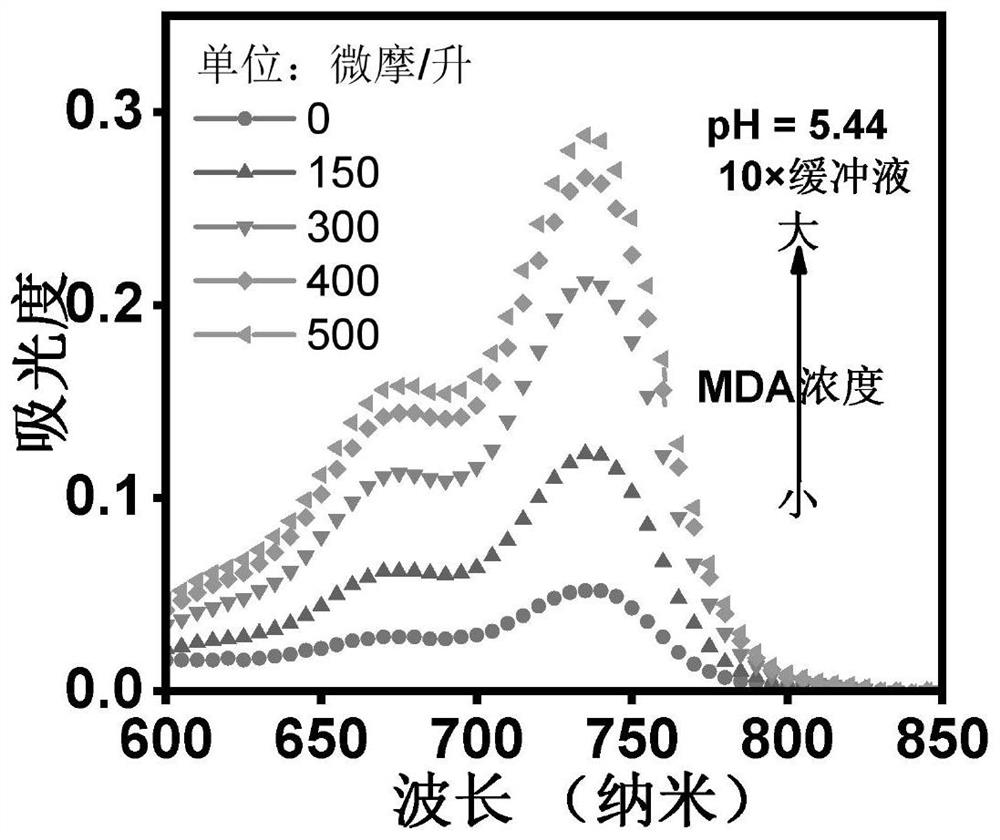Activatable nano photosensitizer as well as preparation method and application thereof
A photosensitizer and nanotechnology, applied in the field of biomedicine, can solve problems such as poor photostability, insufficient water solubility, and toxic and side effects of normal tissues
- Summary
- Abstract
- Description
- Claims
- Application Information
AI Technical Summary
Problems solved by technology
Method used
Image
Examples
Embodiment 1
[0041] A preparation method of an activatable nanometer photosensitizer, comprising the following steps:
[0042] Under sonication, MDA probe (50 μg) and distearoylphosphatidylethanolamine-polyethylene glycol (5 mg) were added to tetrahydrofuran (THF), the components were mixed well, and quickly poured into deionized water. A large excess of distearoylphosphatidylethanolamine-polyethylene glycol can wrap the MDA probe as much as possible and avoid the damage of the molecular probe. After 10-15 minutes of continuous sonication, the hydrophobic MDA probe can enter the hydrophobic cavity of the amphiphilic polymer distearoylphosphatidylethanolamine-PEG, and the hydrophilic layer of the polyethylene glycol can be exposed on the particles. surface, and then the solution was evaporated by a rotary evaporator at 40-50 °C to remove excess THF. Finally, the nanophotosensitizer solution is purified 3-5 times by ultrafiltration to remove the unsuccessfully modified MDA probe, and finall...
PUM
| Property | Measurement | Unit |
|---|---|---|
| particle size | aaaaa | aaaaa |
| particle diameter | aaaaa | aaaaa |
Abstract
Description
Claims
Application Information
 Login to View More
Login to View More - R&D
- Intellectual Property
- Life Sciences
- Materials
- Tech Scout
- Unparalleled Data Quality
- Higher Quality Content
- 60% Fewer Hallucinations
Browse by: Latest US Patents, China's latest patents, Technical Efficacy Thesaurus, Application Domain, Technology Topic, Popular Technical Reports.
© 2025 PatSnap. All rights reserved.Legal|Privacy policy|Modern Slavery Act Transparency Statement|Sitemap|About US| Contact US: help@patsnap.com



